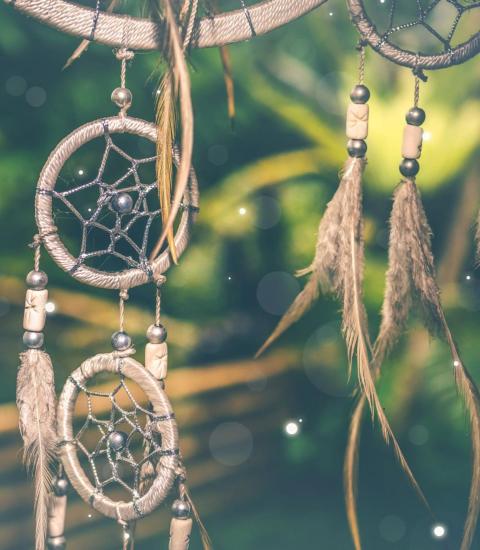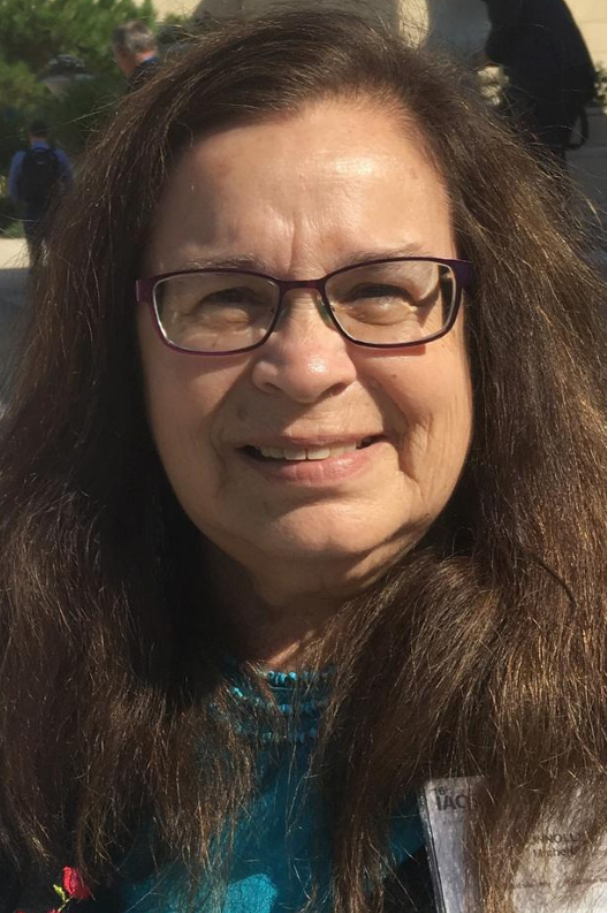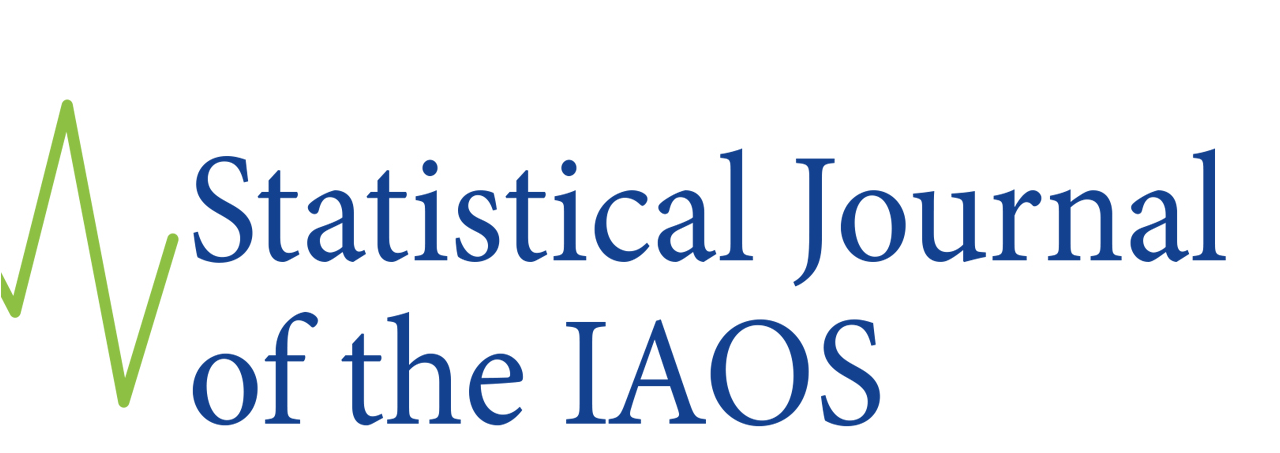

"I was never shy about speaking up about how policies and programs might affect American Indians. For example, when I was at NCHS, Indian reservations were not included in civilian sampling units, but were included/counted along with military reservations. I brought this up again and again and it changed."
By Katherine M. Condon, Ph.D., Interview Editor - SJIAOS
Michele Connolly holds an M.P.H. from the University of California, Berkeley and was a statistical researcher at a variety of United States federal agencies, including the National Center for Health Statistics (NCHS), the Department of Health and Human Services (DHHS) and assignments in and for the U.S. White House, as well as at the state level (California Urban Indian Health Clinics). She is an enrolled member of the Blackfeet Nation in northern Montana. Her research work has focused on measurement and survey data collection, along with impacts on specific populations, primarily Native American/Indigenous population in the United States. She served on First Lady Hillary Clinton’s) Health Care Reform initiative. Her tribal membership and personal experiences of living on the Reservation have given her insight that she has used throughout her career. These experiences have also given her many opportunities to bring focus on Indigenous[2] populations, while remaining true to the mission of the agencies that have employed her in the areas of disability, health and poverty.
Michele Connolly is serving as the Special Editor for this issue of the Statistical Journal of IAOS – “Measuring Indigenous Identification”. This interview took place in person between Michele and Katherine Condon. We were joined by Kirsten West (KW), General Editor of SJIAOS. We sat outside on the deck of the Whole Foods in Columbia, MD on August 3, 2018.
INTERVIEWER: Thank you so much for allowing us to interview you. Let us start at the very beginning and go back to your childhood. Where did you grow up and what was it like?
I grew up in a variety of places, mostly in the West. My parents were meteorologists and my father was transferred from place to place. We spent a lot of time on the Blackfeet reservation in northern Montana, which is contiguous with the Canadian border and Glacier National Park.[3] We went back and forth to the Reservation in Montana. I was born in California. I also spent some time in Las Vegas, at a time when very few people lived there. My parents forecasted weather (including hurricanes) at the end of the Mississippi River in Louisiana. We also spent time in Brownsville, Texas and different places in the West.
We lived in different places on the Reservation, too, including Browning, Montana[4] , which has a population of 1,041 people. My grandmother and I lived outside of Babb [Montana],[5] when it had a population of 25 people. We got our mail at the general store, but now Babb has a separate post office building. When I lived there, the mail came only twice a week – Tuesdays and Saturdays.
When I was working on the Health Care Reform, President Clinton had a number of work groups and wanted to form one on “rural health.” People were volunteered from different work groups. I was on the long-term care and disabilities work group. Since I was the only member to have ever lived in a rural place, I was assigned to the Rural Health work group. During the first meeting of this work group, I met many people from farming communities in the Midwest. When they asked me where I was from, a woman said “You aren’t rural, you are frontier.” [Laughter]
INTERVIEWER: With all that moving about, what was your education like before university?
Despite moving around in elementary school, my father was very adamant that we all – I have three brothers and two cousins who were raised with us – that we all take as much math and science as we possibly could and we get A’s in these subjects. Then, in his words, he didn’t care what other subjects we took or how we did.
We attended high school in Las Vegas [Nevada], which had outstanding teachers, many of whom had been college professors in California. During that time, many of these teachers were paid more than they had in California. My math teacher was a woman who had taught aeronautical engineering at Stanford [University]. I was lucky to have the high school education that I did. I took calculus in high school (a rarity at the time), and as much science as I could. My biology teacher in high school had been the top science teacher in the country a few years before I took his class. We learned how to code in my sophomore year, back in the day when there was only Fortran and Cobol using punch cards.
My oldest brother is a retired electrical engineer; another of my brothers is a professor of computer science the College of Southern Nevada; another brother who wasn’t as good at math, became a high-level administrator in the school district [laughter].
INTERVIEWER: Looking back to our childhoods, we often find that a particular event or person had an impact on our later years. Did a particular person or event shape you into the person you are today – or was it the moving about?
We didn’t really think of it as “moving” because we were always together as a family – with our nuclear family and then with at least one of my Dad’s sisters, and his mother – my grandmother –two of my cousins and various other relatives from the Reservation. We moved around together back and forth between dad’s assignments and Montana.
I would say that my father and his mother – my grandmother – were big influences in my life. They were very encouraging.
INTERVIEWER: Let me break in here and ask an unscripted question – what tribe is your family from?
I am an enrolled member of the Blackfeet Nation[6] of Montana and am also of Cree descent. We are Plains Indians and hunted buffalo. We are also a border tribe. The Blackfoot Confederacy consists of four bands, with the Blackfoot, Blood and Northern Pikuni in Alberta, Canada and the Blackfeet (also known as Pikuni) in Montana. The U.S.-Canadian border, which we call the medicine line, divides our lands. Reservations in Canada are referred to as Reserves.
[There was a bit of a discussion here about my (KC) family experience and that there is a scholarship at Johns Hopkins University with my uncle’s name which is intended to help Native American students studying computer science/physics. This led the conversation to continue as follows.]
I just returned from Montana. While I was there, my cousin and I talked about how we really like to figure out how things work and how they made. Our grandfather was the first auto mechanic in Montana. We were encouraged to fix and build thing growing up. It made no difference that we were girls. We both sew and make quilts and fix things around the house. My cousin built her deck and house. One time, my Dad brought home a giant box of pocket watches. He had us take them apart and put them back together again.
[We chuckled and I commented on the interesting things our parents do to us. I recalled that my father brought me an abacus after a trip he made when I was 6 years old. Michele responded – as if she herself had received the abacus as a gift – “What do I do with this?” We all laughed.]
In high school, I wanted to be a musician. I played clarinet. In Las Vegas there are a lot of symphony musicians who play on The Las Vegas Strip. They had a little orchestra that met every Saturday morning and I would play with them, when I was fifteen or sixteen years old. They were really fine musicians from around the world and I learned a lot. I was offered music scholarships, but Dad said “No, I want you to go work on your math so you can fall back on it.”
This is a preview of an interview conducted for and published in the Statistical Journal of the IAOS. The full interview can be read here.
[1] The views and opinions expressed in the conversation are those of the interviewee and do not necessarily reflect the policy or position of the Statistical Journal of the International Association for Official Statistics, nor IOS Press.
[2] In the United States, the term “Indigenous people” refer to American Indians and Alaska Natives, sometimes referred to as Native American. In addition, individuals often refer to themselves by their tribe. Native Hawaiians and Other Pacific Islanders (e.g. Guam) are also Indigenous Americans.
[3] For more information, see https://en.wikipedia.org/wiki/Blackfeet_Nation
[4] Browning is a town in Glacier County, Montana. It is the headquarters for the Blackfeet Indian Reservation and the only incorporated town on the Reservation. The town was named in 1885 for Commissioner of Indian Affairs D. M. Browning. For more information, see: https://en.wikipedia.org/wiki/Browning,_Montana
[5] Babb is a small unincorporated farming and ranching community in Glacier County, Montana, United States, on the Blackfeet Indian Reservation. The community experiences a large influx of tourist in the summer months as it is the gateway to the Many Glacier area of Glacier National Park For more information, see https://en.wikipedia.org/wiki/Babb,_Montana
[6] For more information, see http://blackfeetnation.com/.
